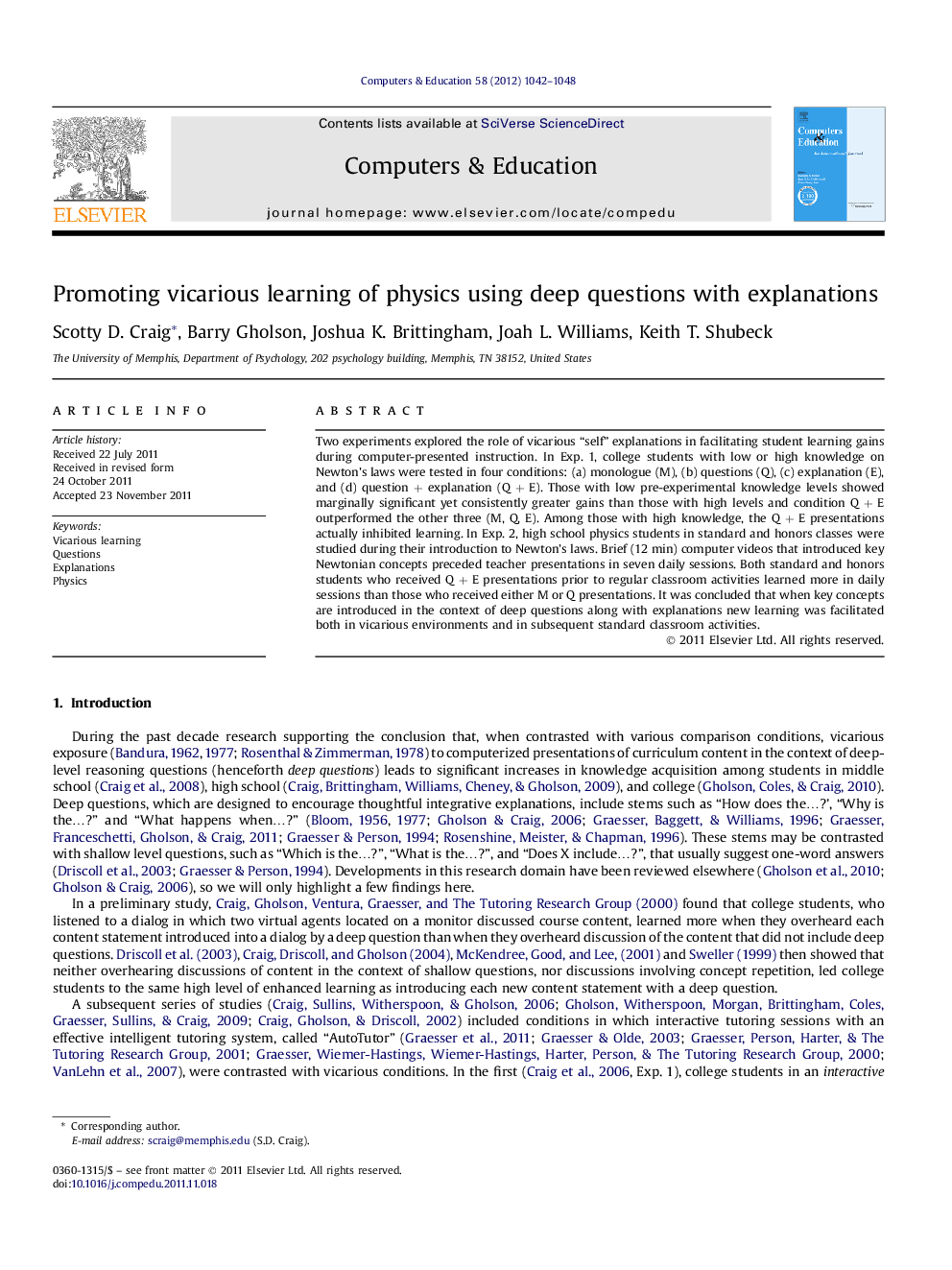| Article ID | Journal | Published Year | Pages | File Type |
|---|---|---|---|---|
| 348742 | Computers & Education | 2012 | 7 Pages |
Two experiments explored the role of vicarious “self” explanations in facilitating student learning gains during computer-presented instruction. In Exp. 1, college students with low or high knowledge on Newton's laws were tested in four conditions: (a) monologue (M), (b) questions (Q), (c) explanation (E), and (d) question + explanation (Q + E). Those with low pre-experimental knowledge levels showed marginally significant yet consistently greater gains than those with high levels and condition Q + E outperformed the other three (M, Q, E). Among those with high knowledge, the Q + E presentations actually inhibited learning. In Exp. 2, high school physics students in standard and honors classes were studied during their introduction to Newton's laws. Brief (12 min) computer videos that introduced key Newtonian concepts preceded teacher presentations in seven daily sessions. Both standard and honors students who received Q + E presentations prior to regular classroom activities learned more in daily sessions than those who received either M or Q presentations. It was concluded that when key concepts are introduced in the context of deep questions along with explanations new learning was facilitated both in vicarious environments and in subsequent standard classroom activities.
► Both high school and college level students understanding of Physics can be improved using vicarious learning. ► A series of two studies show that deep questions and explanations can improve vicarious learning. ► The impact of vicarious learning environments was tested in a blended classroom learning environment. ► These two studies show methods for increasing understanding of Physics using short multimedia videos using vicarious learning.
